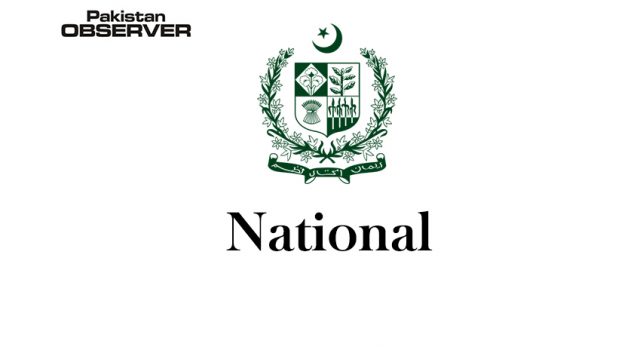Rabia Nazir
TO safeguard territo
rial integrity, Paki
stan armed forces always played a substantial role to rigorously tackle any emerging threat and inimical situation. Since 1947, Pakistan has been facing severe challenges from the Indian side but, acquiring strategic abilities assist Pakistan to turn down malicious intentions of India.
Along with military and Air force, Pakistan Navy vigilantly defended the territorial water zones both in warfare and peace times. The history of Pakistan Navy is explicitly full of glorious and eminent combats, exquisite and excruciating maneuverability, and tactical spectacles to defeat even superior naval power.
In the 1965 Indo-Pak war, the Pakistan Naval force constantly engaged in countering Indian forces and historical contributions by conducting massive operations, which caused irreparable damage to IAF. Operation Dwarka and Operation Grand Slam are prominent examples in this regard. These operations were conducted to give Indian armed forces explicitly a befitting response. The Submarine used as a deterrent asset named “Ghazi” brought remarkable development to knock down the malicious designs of India. The enemy much constrained by news of Ghazi out at sea could not put its naval combatants to action.
In effect all naval units had bottled up at harbour through a classical example of blockade by a single sub surface platform against a numerically superior enemy. On 6 September1965, one destroyer, two new and two old frigates were deployed on the eastern coast of India. The Carrier Vikrant and Delhi were under refit at Bombay while most of the remaining destroyers and frigates had just returned to Bombay after completing their exercises at Vishakhapatnam.
It so happened that Indian Navy was caught unguarded right at the outset of an impressive naval action.It was an operational compulsion that Karachi harbour be defended and radar station at Dwarka was providing vital info to enemy air raids aimed at this asset. It was therefore planned to carryout naval bombardment at Dwarka to serve following objectives:
To draw the heavy enemy units out of Bombay for the submarine to attack, to destroy the radar station at Dwarka, to lower Indian morale, to divert Indian air effort away from north.The bombardment commenced when ships were around 6 miles away from Dwarka and it took only four minutes to complete the firing with altogether 350 rounds on the target. It is amarvelous achievement that all personnel of Pakistan Navy endear and hope to repeat such feats in all future naval endeavours.
Besides performing operationally well during wartimes, Pakistan Navy is a regular contributor to international efforts for peace and stability in the Indian Ocean Region. Combined Task Force 150 is one of the three Task Forces within the ambit of Combined Maritime Forces which is a multinational coalition for counter terrorism operations. Its mission is to promote maritime security at sea, deter, deny and disrupt acts of terrorism while countering related illicit activities at sea. Pakistan has been given the command of the naval coalition various times which is rotated between participating nations on a four to six-month basis.
Similarly CTF 151 is another 35 nations’ task force. Its mission is to disrupt piracy and armed robbery at sea and to engage with regional and other partners to build capacity and improve relevant capabilities in order to protect global maritime commerce and secure freedom of navigation. Pakistan has commanded this task force for 8 times on rotational basis.
These two international engagements speak volumes of Pakistan Navy’s professionalism and ability to integrate into international standard naval operations with great interoperability skills. Pakistan has also held AMAN series of multinational naval exercises every alternate year since 2007. The exercises aim to demonstrate the allied nations’ capabilities to fight terrorism and other maritime threats, as well as to provide a platform for participants to hone their skills, and build cooperation and friendship to promote peace and stability.
In contemporary conventional and non-conventional conflict scenarios, the war waging strategies have been transforming for effective outcomes. Surprise and clandestine planning against the enemy have also remained an essential element of fighting a war, which has been seen in the 1965 Indo-Pak war. Since the first day, India strives to threaten Pakistan by implementing modern warfare, advanced surveillance, and reconnaissance mechanism; that’s why Pakistan placed its naval apparatus in the maritime zone to retort them back with an immediate response.
Perceiving the external security threats and strategic environment, Pakistan Navy is extensively moving ahead with the idea that “The more you sweat in peace, the less you bleed in war”. Engaging in peacetime operations with multinational navies, Pakistan Navy, equipped with modern warfare strategy by strengthening strategic deterrence against any surprise attack. Every year, Pakistan Navy celebrates 8 September as a victory day to commemorate and honour its officers who actively participated in these particular operations.
Being the guardian of maritime sea boundaries and prime contributor to international efforts for peace and stability, Pakistan organized and provided operational assistance to external navies to counter naval challenges at sea. In short, the comprehensive, advanced technologies, improved intelligence, and reconnaissance network, extensive operational exercises and capabilities, and an optimistic approach helped Pakistan Navy to safeguard this beloved motherland against any provocation and emerging menace.









